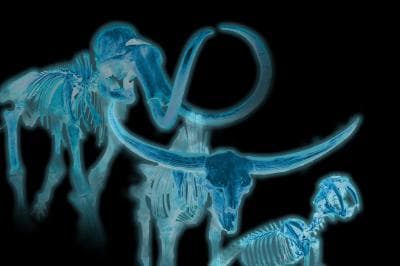
What our Ice Age mammals can teach us about endangered species
According to a Yale University study published today, the ghosts of Ice Age mammals can teach us valuable lessons about what happens to our ecosystem when species go extinct.
Researcher Matt Davis tracked the history of some of the world’s largest mammals. His results were published in the online edition of the journal Proceedings of the Royal Society B.
Davis reported that the Ice Age wasn’t as hard on functional diversity – the role that an animal plays within an ecosystem – as previously thought. Animals that survived the Ice Age, such as the beaver, proved to be just as distinct as those that did not. However, he warned that our planet has reached a point where losing even a small number of core mammals would leave as large a gap as all of the Ice Age mammal extinctions put together. In the Ice Age, our planet lost around 38% of it’s large-mammal functional-diversity.
“You can think of it like a big tent where every animal is holding a pole to keep the tent up,” said Davis, a graduate student in Yale’s Department of Geology and Geophysics. “We lost a lot of species when humans first arrived in North America, so part of our tent fell down – but not as big of a part as we previously thought. However, now we only have a few animals left holding up those poles. If they die, the whole tent could collapse.”
His study reviewed 94 large mammal species in North America over the last 50,000 years. These included Columbian mammoths, Canadian lynx, long-horned bison, and sabertooths, as well as cougars, moose, coyotes, elk, raccoons, dogs, and cows.
One of the study aims was to examine the relationship between functional diversity and extinction risk: were the most distinct species the ones most at risk? Davis found that distinct species with unique traits were not more likely to go extinct. He suggested this is why the Ice Age mammals extinctions were not as harsh on the surrounding ecosystems.
In the case of mammoths, nothing was able to replace their unique function – which was essentially being really large – once they were gone. But Davis found that some European domestic animals introduced later did restore some functional diversity.
For today’s species, such redundancies in functionality are much less frequent. Davis warned that vulnerable species like polar bears, jaguars, and giant anteaters have no functional equivalent and thus it would not be as simple to restore their functional diversity.
“Examining the past through the fossil record actually allows us to better predict future extinctions,” Davis said. “We can’t understand how valuable or vulnerable species are today without considering the ‘ghosts’ of those species that died before them.”
—
Source: Yale University. Illustration by Matt Davis/Yale University












